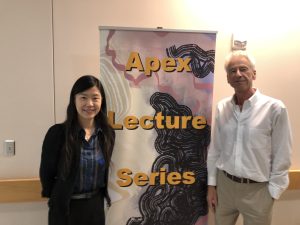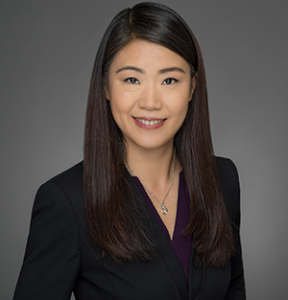
Guest lecturer Jin Zhang delivered a School of Medicine Basic Sciences Apex Lecture to a packed room on April 17. Zhang is a professor of pharmacology, chemistry and biochemistry, and biomedical engineering at the University of California, San Diego.
Zhang is interested in understanding how cells—the basic units of life—sense changing environments and orchestrate specific responses to carry out life processes with the goal of developing a fundamental understanding of spatiotemporal regulation of cell signaling. Her lab has developed a series of molecular tools and fluorescence imaging technologies to probe the properties, behaviors, regulation, and functions of molecules.
In her talk, “Illuminating the Biochemical Activity Architecture of the Cell,” Zhang expounded on her hypothesis that cellular biochemical activities are spatially organized into an “activity architecture” and that disease states reflect the reorganization and restructuring of this activity architecture. Research conducted by the Zhang lab over the past 22 years has focused on cellular biochemical activities, signaling networks, and the development of biosensors.
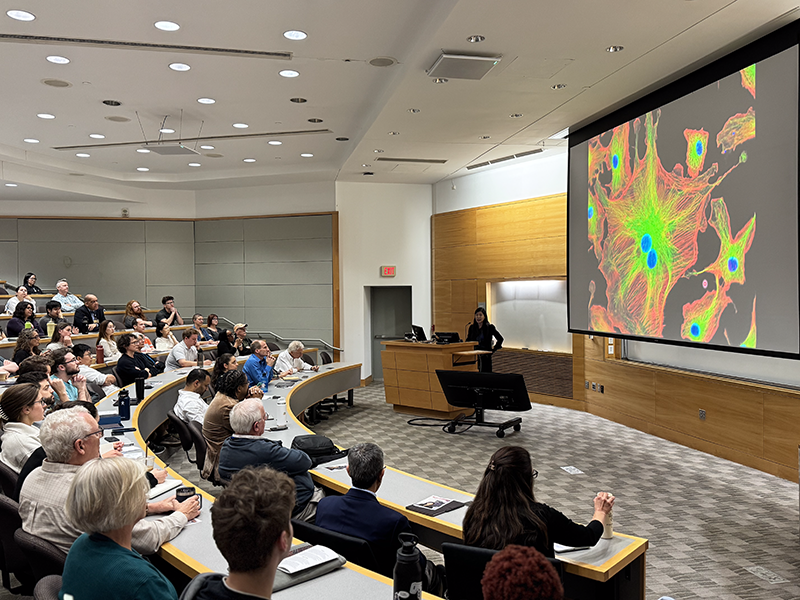
The Zhang lab has engineered various fluorescence-based sensors to study kinases, phosphatases, and second messengers—molecules that relay signals received at a cell’s surface to internal targets, often amplifying the signal and triggering a cascade of cellular events—achieving up to 15-fold fluorescence intensity enhancement. These sensors, including those using fluorescent proteins and a self-labeling protein tag called HaloTag, have enhanced sensitivity and enabled super-resolution imaging.
The lab has also collaborated with other labs for tissue and super-resolution imaging and explored the potential of their sensors for studying dynamic signaling networks and G protein–coupled receptor regulation. Zhang then transitioned to discussing GPCR signaling, particularly the role of biomolecular condensates in regulating specificity. Her research has revealed that the regulatory subunit of PKA undergoes liquid-liquid phase separation, sequestering second messengers and the catalytic subunit. A tested disease-related mutant showed distinct material properties, trapping catalytic subunits and reducing PKA signaling—features that were linked to neurodegenerative disorders.
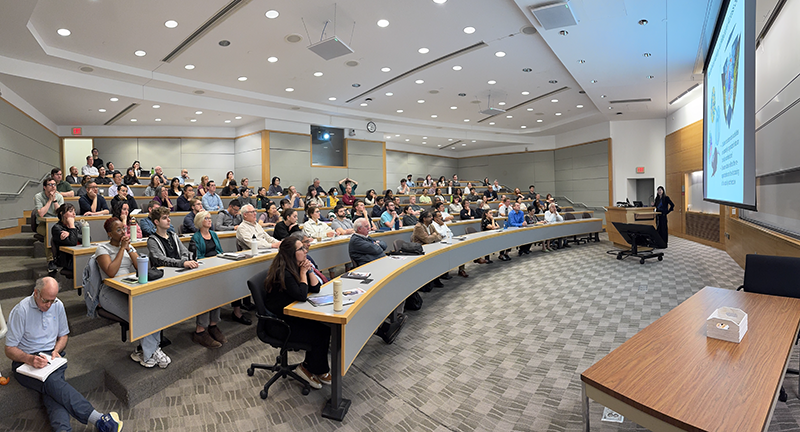
Zhang then discussed elements related to the spatial regulation of GPCR signaling, emphasizing endosomal activation and the unique properties of beta1 receptors at the Golgi. The findings she discussed emphasized the importance of spatially distinct transducer coupling in GPCR signaling and its potential implications for cell division, differentiation, and migration.
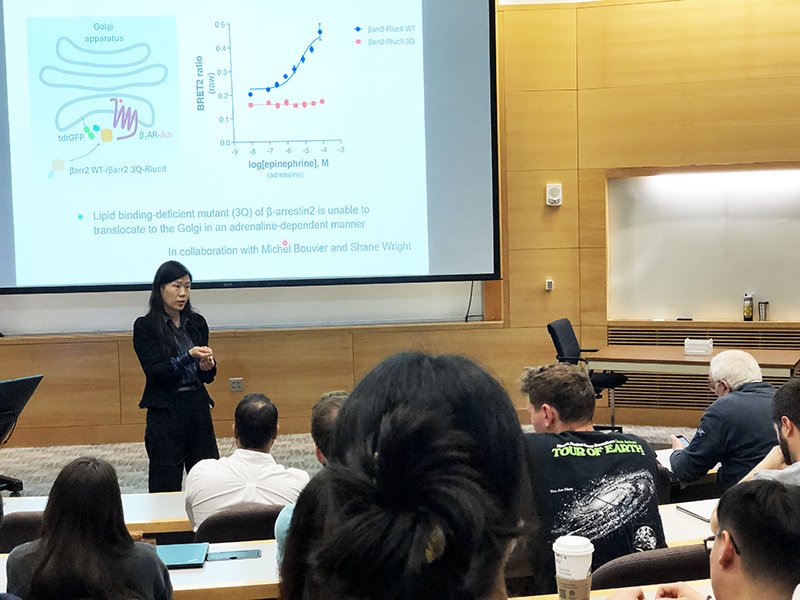
At the end of her talk, Zhang fielded questions from faculty and students, formally at a Q&A and informally at a reception that followed the lecture. The event was co-sponsored by the Department of Cell and Developmental Biology.
